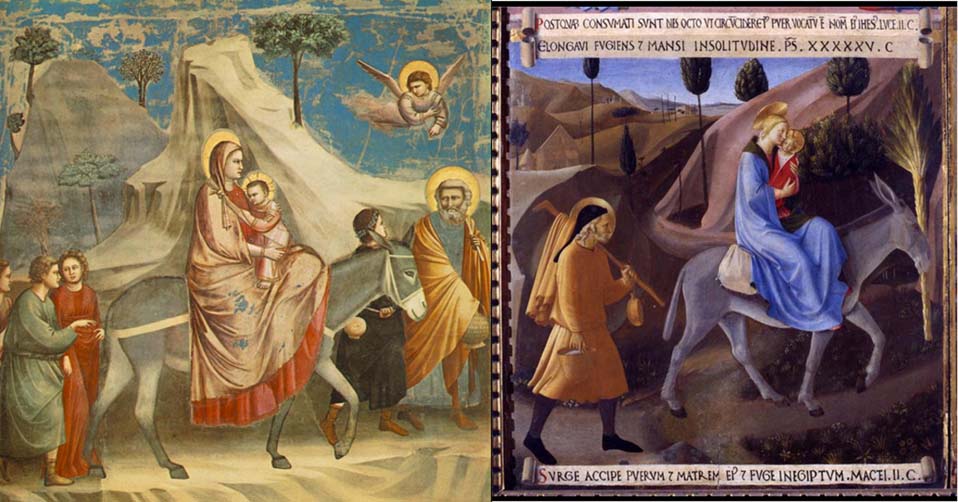Refugees
I never thought that I would choose a subject of one of my cut-outs that would be politically or socially inspired. Especially, as I grew up in Poland under communist regime when artists were forced, or at least strongly encouraged, to produce art that was politically motivated. The peoples’ reaction to that was an almost universal rejection of the art of socrealizm, and the works produced were patronized and looked upon with condescending.
And here you are with my piece called Refugees. Last year was probably the year of most intense refugee tragedy and abuse of millions of men, women and children by governments, armies, politicians (not all), religious leaders (with some exception) and citizens. Practically everywhere. It is terrible and shameful. I doubt any of those women and children had anything to do with anything that these wars are about. Their lives and their suffering are being used as chips in heinous political games.
I thought, at least working on this cut-out I will be thinking of these poor people, whose lives has been shattered, perhaps forever… Maybe because I was once a sort of refugee, first in Italy, then in the US (immigrant). True, I was incredibly lucky, I never had to go to a refugee camp, I always had a well-paid job in my own profession, a means to rent an apartment, prior contacts, knew the languages, and I found a great support from old and new friends in Italy. Yet, the feeling of uncertainty, the dependence on the unknown, has not left us for years. So, I imagine only how horrible it is, when they do not have all these things I had, and maybe they went directly through the experience of war…
The general layout of this piece has been inspired by a painting that I became enamored in very early: Pieter Brueghel’s the Elder “Hunters in the Snow” (1565). The dogs and hunters are at the elevated first plan at the left lower corner, then ground drops toward right, and remote activities happen to the right and at the center, a rock castle at the right upper corner and what seems the sea to me is at the upper left. I like very much the a-bit-from-the-above perspective that Brueghel uses often in his landscapes and town-scenes, even if you would have to climb on a house roof or on a tree to have such a view.
 I replaced the hunters with the rhino and his companions, and kept the dogs and these few trees. The center, and other activities were replaced by the family of lions and other animals.
I replaced the hunters with the rhino and his companions, and kept the dogs and these few trees. The center, and other activities were replaced by the family of lions and other animals.
The rock castle in my version grew into a walled city, as it often is shown in early renaissance paintings, like in a beautiful, purissimo, fresco of Simone Martini of, 1330 Guidoriccio da Fogliano all’assedio di Montemassi, which shows the condottiere going to conquest the castle of Montemassi (not to mention his name, Guido the Hedgehog). By the way, a recent analysis of the fresco, paradoxically shows a later painting underneath that of Guidoriccio. That suggests that what we view today in Siena is in fact a later (ca 1440) copy of the original made from sketches the existence of which was not known until 1990s.
The rock castle in my version suddenly became the city of Carcassonne (southern France), which seems like a medieval handsome toy-town, which has been discretely touch-upped in 1850ies by a romantic architect Viollet-le-Duc. My father used to show us photos he took of Carcassonne during his visits in 1960s and since then I was very impressed by its monumentality. We re-visited Carcassonne in 2016 and despite tumultuous crowds of tourists we still liked it.
However, instead of the inside true old-town, my Carcassonne contains the epitomy of the modern world, with a number of recognizable iconic twenty century (and earlier) buildings of various European and US capitals. But the town entrance drawbridge is drawn up, meaning: no access.
There is still another piece that is externally inspired: the presence of the Holy Family. This is a popular theme in Italian painting showing the flight to Egipt of St. Mary, Joseph and baby Jesus, refugees from the Herod’s slaughter of the innocents. Indeed, the Holy Family seems to be the most known refugee family in european (christian) tradition. The famous art examples on the subject are a fresco Fuga in Egitto of Giotto (1303-05) in Capella dei Scrovegni in Padua (below, left), and an equally beautiful painting by Fra Angelico on a wardrobe wooden panel (Armadio dei Argenti) for Basilica dell’Annunziata, in Florence (1451-53) (right).

(left) Giotto, 1306; (right) Fra Angelico, 1451
This brings us to a question posed to me by two of early viewers of this cut-out: who are the refugees in that image, and who are not? My answer is: all of them are. The little boat people at the shore to the left, and the Holy Family. And the animals?? They were the first refugees from the mean-spirited and uncontrolled expansion of humans into animal habitats. In addition, as my daughter interprets, all the animals in my cut-outs are representation of humans.
But at the end, it is up to every viewer to think what they feel they are seeing.





After looking for a while at the cut-out, l was inspired to pick up the Ian Morris book “Why the West Rules – for Now”, first published in 2010, from my son’s bookshelf in his “Room with a View” on the City of London.
The crosses in the walled citadel, the Holy Family and the other refugees outside are symbolizing the guilt of many Christians?